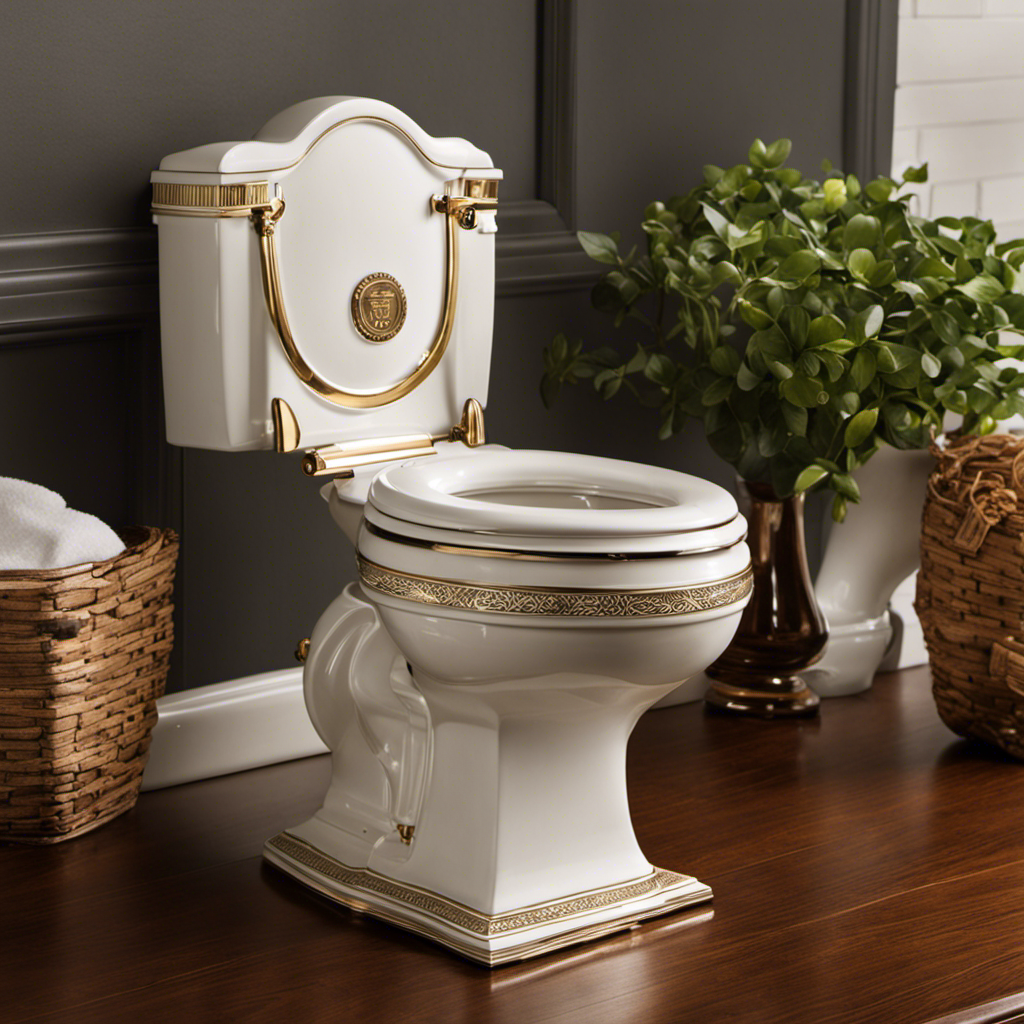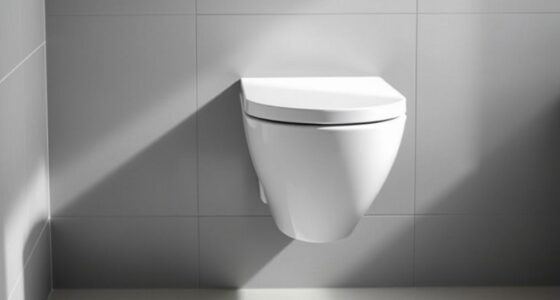Did you know that a running toilet can waste up to 200 gallons of water per day? That’s equivalent to flushing your toilet over 50 times!
If you’re tired of the constant sound and the rising water bill, then you’ve come to the right place. In this article, I will guide you through the common causes of a running toilet, help you identify the problem, and provide step-by-step instructions on how to fix it.
Say goodbye to the running toilet nightmare once and for all!
Key Takeaways
- Faulty flapper valve and worn or damaged flapper valve are common causes of a running toilet.
- Continuous water leakage into the bowl can lead to water waste and increased water bills.
- Listening for constant water flow and checking for continuous overflow in the tank can help identify a running toilet.
- Tools and supplies such as an adjustable wrench, replacement toilet flapper, and spare toilet fill valve are needed to fix a running toilet.
Common Causes of a Running Toilet
One of the most common causes of a running toilet is a faulty flapper valve. The flapper valve is responsible for controlling the flow of water from the tank to the bowl. When it becomes worn or damaged, it can prevent the valve from properly sealing, causing water to continuously leak into the bowl.
This can lead to a constantly running toilet, wasting water and potentially increasing your water bill. To troubleshoot this issue, you can start by inspecting the flapper valve for any signs of wear or damage. If necessary, you can easily replace the flapper valve yourself or seek professional toilet repair services.
Remember to turn off the water supply and flush the toilet to empty the tank before replacing the valve.
How to Identify a Running Toilet
To identify a running toilet, you can simply listen for any constant water flow or check if the water in the tank is continuously overflowing. Troubleshooting a running toilet is essential to prevent water waste and potential damage to your bathroom.
Here are some signs of a malfunctioning toilet that you should keep an eye out for:
-
Constant water flow: If you hear the sound of running water when the toilet is not in use, it indicates a problem with the flapper valve or the fill valve.
-
Continuous overflow: If the water in the tank is overflowing into the toilet bowl, it means that the fill valve is not shutting off properly.
-
Water stains: Look for water stains around the base of the toilet or on the floor, as this could indicate a leak.
Steps to Fix a Running Toilet
You should first turn off the water supply to the toilet before attempting to fix a running toilet. This is a crucial step in DIY toilet troubleshooting.
To fix a running toilet, start by removing the tank lid and observing the components inside. One common issue is a faulty flapper valve, which can be easily replaced.
Additionally, check the fill valve and adjust the water level if necessary. Another possible cause is a damaged or worn-out flush valve seal, which should be replaced.
If these steps do not resolve the issue, it may be time to call for professional toilet repair services. They have the expertise to diagnose and fix more complex problems, such as leaks in the pipes or a faulty flush handle.
Tools and Supplies Needed to Stop a Running Toilet
Make sure you have the necessary tools and supplies on hand to fix a running toilet. When it comes to troubleshooting toilet problems, having the right equipment is essential.
Here are three important tools and supplies you’ll need:
-
Adjustable wrench: This tool is necessary for tightening or loosening nuts and bolts that may be causing the toilet to run.
-
Toilet flapper: A faulty flapper is a common culprit for a running toilet. Having a replacement flapper will allow you to quickly fix the issue.
-
Toilet fill valve: If the fill valve is malfunctioning, it can cause the toilet to continuously run. Keep a spare fill valve handy for easy replacement.
By having these tools and supplies readily available, you’ll be prepared to tackle any running toilet problem that comes your way.
Now, let’s move on to preventing a running toilet in the future.
Preventing a Running Toilet in the Future
Having the right maintenance routine in place will help ensure that your toilet does not continue to run in the future. Regular toilet maintenance is important to prevent issues like running toilets. By taking care of your toilet and implementing eco-friendly alternatives, you can save water and reduce your environmental impact.
Here is a table that outlines the importance of regular toilet maintenance and some eco-friendly alternatives to traditional toilet systems:
| Importance of Regular Toilet Maintenance | Eco-Friendly Alternatives to Traditional Toilet Systems |
|---|---|
| Saves water and reduces water bills | Dual-flush toilets |
| Prevents leaks and water damage | Low-flow toilets |
| Extends the lifespan of your toilet | Composting toilets |
| Improves overall toilet performance | Waterless urinals |
| Reduces the need for costly repairs | Bidet attachments |
Conclusion
In conclusion, fixing a running toilet is a fairly simple task that can be done by anyone with the right tools and knowledge. By identifying the common causes and following the necessary steps, you can easily put an end to the never-ending water flow.
Remember to stay proactive by regularly maintaining your toilet to prevent future issues. So don’t delay, take action and bid farewell to the running toilet madness! Trust me, it’s a game-changer that will leave you feeling as light as a feather, floating on cloud nine.










